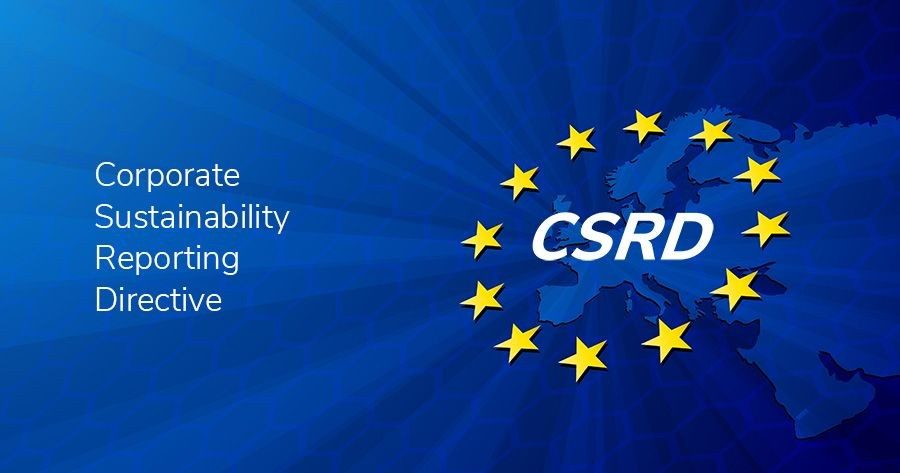Home | Knowledge Center | 2024 | Diving into the E in ESG Related to CSRD Requirements

What you need to know about the environmental standards relating to the ESRS disclosures.
On the 31st of July 2023, the European Commission adopted the European Sustainability Reporting Standards (ESRS), the final rules for use by all companies subject to the Corporate Sustainability Reporting Directive (CSRD). The standards cover the full range of environmental, social and governance issues, and they provide information for investors to understand the sustainability impacts, risks and opportunities of the companies in which they invest.
European Sustainability Reporting Standards (ESRS)
There are twelve ESRS which cover the full range of sustainability issues and two overarching and cross-cutting standards:
ESRS 1 – General Requirements: sets general principles for reporting and covers important concepts such as double materiality.
ESRS 2 – General Disclosures: specifies essential information to be disclosed by all companies under CSRD scope.
The remaining ten ESRS are the topic standards that cover environment, social and governance and are quite detailed, covering approximately 70 specific disclosures and KPIs. There will be also sector specific standards which are being developed and will be applicable and material to all companies within a sector.
The topic and sector specific standards and the individual disclosure requirements and data points within them are subject to a materiality assessment. This means that the company will report only relevant information, and they may omit the information that is not relevant or material for its business model and activity.
Changes in the Final Publication of ESRS
At the end of July 2023, there were some significant changes in the final adopted standards.
Only ESRS 2 is now universally mandated for all reporting companies. Other elements of ESRS are required only if they relate to an issue that is deemed to be material to the industry or to the specific company.
Covered companies will be required to undertake robust materiality analysis using the double materiality process. The double materiality process essentially obliges companies to consider how the company needs activities, impacts people and the environment, but also how social and environmental issues create financial risks and opportunities for the company.
Once companies identify a topic as material, it’s important to highlight that the disclosure requirements become mandatory. The information must be disclosed if it is material, and the materiality assessment process will be subject to external assurance.
Other disclosure requirements, which were initially mandatory, are now made voluntary with the latest July release. These are some of the requirements for all reporters, for example, on biodiversity transition plans, and some indicators on non-employees in the company workforce. Also, companies have the option to explain or not why they have deemed a particular sustainability topic to be non-material.
However, there is a notable exception, which is climate change. So even if a company concludes that climate change is not a material topic and therefore does not report in accordance with the standard, it has to provide a detailed explanation of the conclusions of its materiality assessment with regards to the topic of climate change.
So obviously this is a kind of exclusion or mandatory requirement that you still have to explain and reflects the fact that climate change has wide-ranging and systemic impacts across the economy and the sectors.
Lastly, other changes made in the final rules are related to smaller companies with fewer than 750 employees who now have extended phasing and may choose to not disclose certain requirements such as scope 3 greenhouse gas emissions and other disclosures on their own workforce in the ESRS 1 during the first reporting year, and then also they have the option not to disclose biodiversity, workers in the value chain and affected communities and the consumers in the first two reporting years as well.
Rest of the Environment Standards: Climate Change
There are five environmental standards:
ESRS E1
Helps users understand how companies affect climate change, considering their past, current and future mitigation efforts, according to the Paris Agreement. So, companies will need to report on their plans and capacity to adapt its strategy and business model in line with the transition to a sustainable economy and to contribute to limiting global warming.
It is important to note that companies will need to consider their dependencies on climate change and how they will be impacted from the financial side regarding these issues.
There are of disclosure requirements regarding energy consumption, improvement in energy efficiency, energy mix such as coal, oil and gas-related activities and of course the share of renewable energy in its overall energy mix and scope 1, 2 and 3 GHG emissions which should cover the entire value chain.
But also there are disclosures related to GHG removals and storage from companies, operations and value chain, and specific GHG emission reductions or removals from climate change mitigation projects that the company might be involved in.
ESRS E2
Refers to how the company affects pollution of air, water and soil. It considers actions taken by the company, including any results and how they are tracking and monitoring those, and then how the company is aligned to create a toxic-free environment with zero pollution in support of the European Union action plan towards zero pollution for air, water and soil.
But to highlight also here, this standard requires disclosure of information on the production, use, distribution, commercialization etc of substances of concern and substances of very high concern as defined in regulations like REACH.
ESRS E3
Considers how the company affects water and marine resources. It embraces actions and results to prevent or mitigate actual or potential negative impacts to protect water and marine resources, reducing water consumption and addressing risks and opportunities.
This standard considers how the company contributes to the European Green Deal’s ambition for fresh air, water, healthy soil and biodiversity as well as to the sustainability of the blue economy and the fisheries sectors.
ESRS E4
Related to biodiversity and ecosystems, especially the extent to which the company contributes to the drivers of biodiversity and ecosystem loss and degradation. This standard considers, among others, how companies adapt their strategy and business models representing planetary boundaries related to biosphere integrity and land-system change and relevant aspects to the EU Biodiversity Strategy for 2030.
ESRS E5
Considers how companies are using resources and its related to circular economy, including efficiency, avoiding depletion and considering the sustainable sourcing and use of renewable sources.
It asks companies to explain how they are adapted in relation to circular economy principles, including but not limited to how they minimize waste, maintain the value of products of materials and other resources at their highest value, and enhancing the efficient use in production and consumption.
It is notable to mention that this particular standard builds on a lot of the existing requirements in EU legislative frameworks and policies such as European Green Deal, the European Taxonomy, European Circular Economy Action Plan, the Waste Framework Directive, and all of these should be known to many of the companies and the reporters in scope.
For each of the standard topics mentioned above, but in general, for all the ESRS standards, the reporting companies should explain how these material topics are considered in the organization strategy.
There’s also disclosure on the governance, the policies, processes the companies have in place, their systems, key performance indicators, targets set and of course results and progress measuring that the reported information is really qualitative and quantitative in nature, assessing sustainability targets and indicators that are set by companies and progress towards achieving them over short, medium and long periods of time as appropriate due to the context of the company.
Are companies that already report under other frameworks like GRI for example – required to start all over again to comply with the European sustainability reporting standards?
GRI and EFRAG have published a joint statement on the high level of interoperability achieved between the European Sustainability Reporting Standards – ESRS and the GRI standards.
So current GRI reporters will be able to report under the ESRS. One way entities reporting under ESRS are considered as reporting with reference to the GRI standards and will therefore avoid the burden of multiple reporting.
The ESRS allows also entities to use the GRI standards to report on additional material topics covered in GRI standards that may not be covered by ESRS. For example TAX.
Also, EFRAG and GRI still need to work on a detailed comparison between their relative disclosure requirements and data points that correspond to ESRS and GRI and to illustrate the high level of commonality achieved.
This is certainly great news for companies since they will be able to report now in accordance with both the ESRS and GRI standards, through one report mechanism.
If you find this interesting; share the article

Global Standards | CEO
Stand away from the traffic?
Subscribe to our Newsletter today